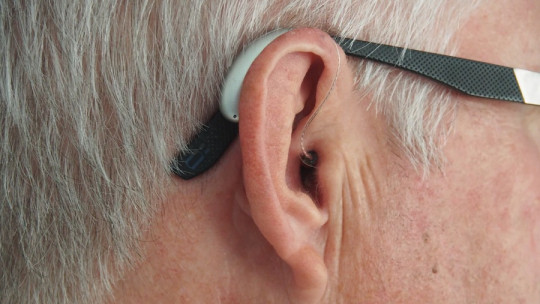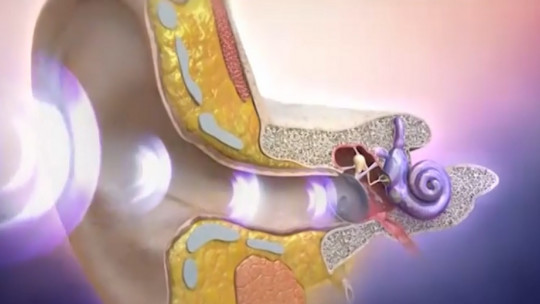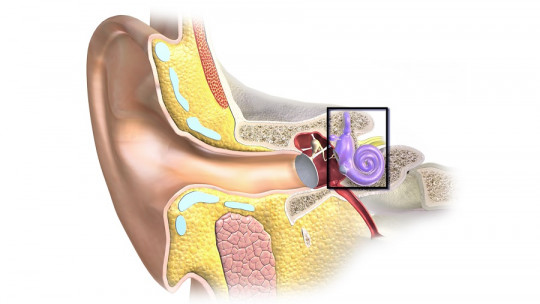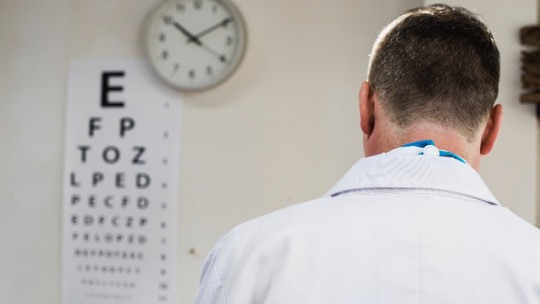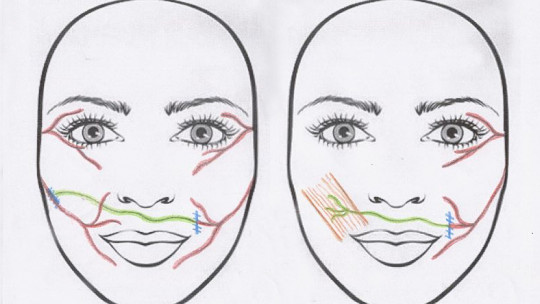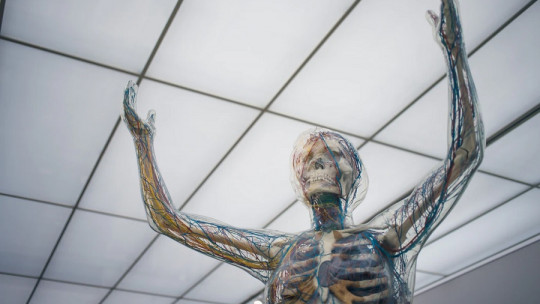Hearing problems are more common and diverse than they seem. Many people around us have problems hearing well and need devices and medical interventions to achieve hearing within the normal range.
Not all hearing problems are the same. There are those who cannot hear at all, while others have a lower hearing range than most people but still hear.
There are several types of hearing impairment and there are many criteria to classify them criteria that we are going to see below in addition to mentioning some of the main causes behind hearing problems.
Types of hearing impairment, classified
We understand hearing disability to be any condition in which the affected person has a reduced ability to perceive sound, which in turn is accompanied by problems in verbal communication. There are several types of hearing impairment, depending on the severity of the hearing loss and what problem has caused the person to not be able to hear well.
The severity of a hearing impairment is considered based on the minimum sound that the affected person can hear with their better ear The higher the decibels (dB), the louder the sound and, if there is a loss close to 90 dB, it is generally referred to as deafness. If there are problems hearing but you hear below the limit of 90 dB, the diagnoses range from mild hearing loss to hearing loss and deafness.
In itself, hearing impairment is not a disease, but rather the consequence of different medical conditions that can cause hearing damage. Whether it is a temporary or permanent loss, many people with hearing disabilities can lead a completely normal life using various resources to improve their hearing. Among these improvements we can highlight hearing aids and cochlear implants that would be the equivalent of glasses for those who have vision problems.
Not being able to hear not only affects hearing itself, but also makes communication and language difficult If the person was born with hearing problems, it will be difficult for them to learn their native language, having difficulties in grammar, spelling and vocabulary, with its implications on a social level by not daring to start a conversation or being in an environment with several people talking.
There are several criteria to classify the types of hearing impairment. Being a very heterogeneous type of disability, a single classification cannot be established, although it must be said that those that exist are not mutually exclusive. Basically, we can classify them based on the time of appearance, severity, prognosis and where the injury is located.
According to its time of appearance
Depending on when the person began to manifest hearing disability, we can talk about:
1. Congenital
The person is born with something that causes hearing problems which could be due to a malformation of the structures found in the ear or due to a malfunction at the nervous or cellular level.
Just because it is congenital does not mean that it is detected early, although the ideal is for it to be so to be able to intervene as soon as possible. In this regard, they are divided between hearing disabilities that appear between the moment of birth and age 3 and those that appear after that age.
2. Acquired
hearing impairment It occurs throughout life and can be caused by multiple factors, such as the use of ototoxic drugs (that damage hate) or injuries to the eardrum
Not all acquired deafness is caused by external and avoidable factors, since in many cases hearing impairment appears with age or as a consequence of a degenerative disease.
Within acquired deafness there are three types depending on the moment in which the problem was acquired: prenatal, caused during pregnancy; neonatal; produced during childbirth or immediately after; and postnatal, produced some time after being born.
Whether they are congenital or acquired, It is very important to see if they appeared before or after the person acquired the language If you acquired deafness before learning to speak, it would be a prelingual hearing disability, while if it appears later it is a postlingual hearing disability.
Depending on its severity
Depending on how much or little the person can hear and how necessary it is to resort to special aids to achieve adequate hearing, we speak of three main types of hearing impairment.
3. Cophosis
Cophosis is the hearing condition in which the person cannot hear anything at all Some consider it a synonym for profound deafness, although in this case the person can hear sounds at very high volumes (90 dB).
4. Deafness
Deafness itself is the hearing disability in which The person does not hear sounds below 75 dB, and it is especially serious if they cannot hear them below 90 dB
The person is deaf, but it is not a profound deafness as serious as cophosis because in this case the affected person can hear sounds if they are amplified by means of special devices.
5. Hearing loss
Hearing loss is less serious than deafness, since the person can hear below 75 dB but not the full range of normal hearing
In order to diagnose any of the three hearing conditions we just talked about, it is necessary to perform an audiometry which can give the following results:
Hearing impairment does not have to affect both ears at the same time Hearing impairment can be unilateral or bilateral, that is, one ear may be damaged and the other ear may be healthy, or both may have problems capturing and sending sounds to the brain. If you have a healthy ear, this can be used to compensate for the situation and allow the person to have a relatively normal life without requiring too many hearing aids, although it will be difficult for them to detect where the sound is coming from.
Depending on the location of the injury
Some cases of deafness are caused by a lesion which hinders the perception of sounds and their interpretation at the cortical level. Depending on where this lesion is located, we can talk about the following types of deafness.
6. Conduction deafness
The problem is either in the outer ear or the middle ear. These are the ones with the best prognosis, since treating them is relatively easy Surgical intervention may be required, such as inserting an artificial eardrum, or even requiring a simple cleaning of the ear canal, removing a plug of earwax that is affecting the patient’s hearing.
7. Sensorineural deafness
Sensorineural deafness is complicated to treat since the lesion is located in deeper and more delicate places. Damage may be to the inner ear, the auditory nerve, or even the auditory cortex that is, the place in the brain where acoustic stimuli are interpreted.
8. Mixed
Hearing impairment is due to a problem in the outer and/or middle ear along with a problem more internally, in the inner ear or acoustic nerve.
Forecast
As we have mentioned, hearing disability is not a disease in itself, but rather the consequence of a health problem that has among its symptoms some alteration in the ears or damage to the auditory nerve. Depending on what causes it and if it can be solved, this hearing disability can be permanent or temporary.
If it is permanent, hearing cannot be recovered without the use of special aids and may even go further over the years, an initial hearing loss problem turning into cophosis after a while. On the other hand, if the hearing disability is temporary, it can be cured by eliminating what causes it or by curing the disease or injury that caused it, although there may be consequences in the form of very slight hearing loss.
Common causes
There can be many causes behind a hearing disability, with some being more common than others. These causes vary greatly depending on the age of the affected person, and they can make the diagnosis more or less serious. Deafness that appears in childhood is not the same as one in adulthood or old age and the degree to which it can be treated and corrected is also different
Causes in children
Deafness in children can have congenital causes. Many hearing disabilities in childhood are associated with specific syndromes, currently known up to more than 400 medical conditions in which there is hearing loss or non-disabling hearing difficulty Some examples are Waardenburg syndrome, with partial albinism and deafness; Usher syndrome, with hearing loss and visual problems; and Alport syndrome, with deafness and kidney dysfunction.
Congenital deafness is due to the inheritance of a gene that has the syndrome or disease that causes hearing impairment. In most of these cases, the problem is usually at the level of the cochlea, that is, in the inner ear, although there are also congenital deafness where the damage is more external, such as a damaged ear canal or malformations in the ear canal. ear.
Some children are born with hearing impairment but not caused by genetic problems, but rather perinatal alterations Prematurity, low birth weight, infections that the mother may have had during pregnancy and poisoning with ototoxic substances can cause deafness in the newborn. The hearing disability will manifest itself from the moment of birth and will be evident when the child reaches 3 years of age, at which time she should know how to speak but since she does not hear well she has not yet learned.
There may also be events that worsen the newborn’s hearing health in the first years of life. Your ear is very vulnerable to external elements that can damage it, such as viral diseases such as meningitis, measles or mumps, diseases that can leave hearing problems as consequences. They are also sensitive to ototoxic medications, trauma, the introduction of foreign bodies into the ear canal (eg, swabs), and the development of plugs.
Causes in adults
In the case of young adults, it is common to find cases of hearing loss due to acoustic trauma due to being exposed to sounds above 100 dB, such as nightclub speakers or drills without using adequate acoustic protection (e.g. plugs). Victims of explosion attacks or who have witnessed the detonation of firearms may also have their hearing damaged.
Other factors that lead to hearing problems in adulthood are the use of ototoxic medications, the appearance of wax plugs in the ear canal and the appearance of tumors in the auditory nerve, such as acoustic nerve neuroma. Depending on what causes it, how long the problem has been present and how early you see a specialist, the deafness will be reversible or not.
Causes in old age
Deafness is usually associated with old age. As you age, you may develop a medical condition called otosclerosis , which consists of the joints of the ossicles that make up the inner ear becoming more rigid, which causes them to vibrate less when a sound hits them. Less rigidity means worse driving and, therefore, the person hears less. In turn, the receptors in the middle ear degenerate, becoming less effective and making it difficult to hear well.

